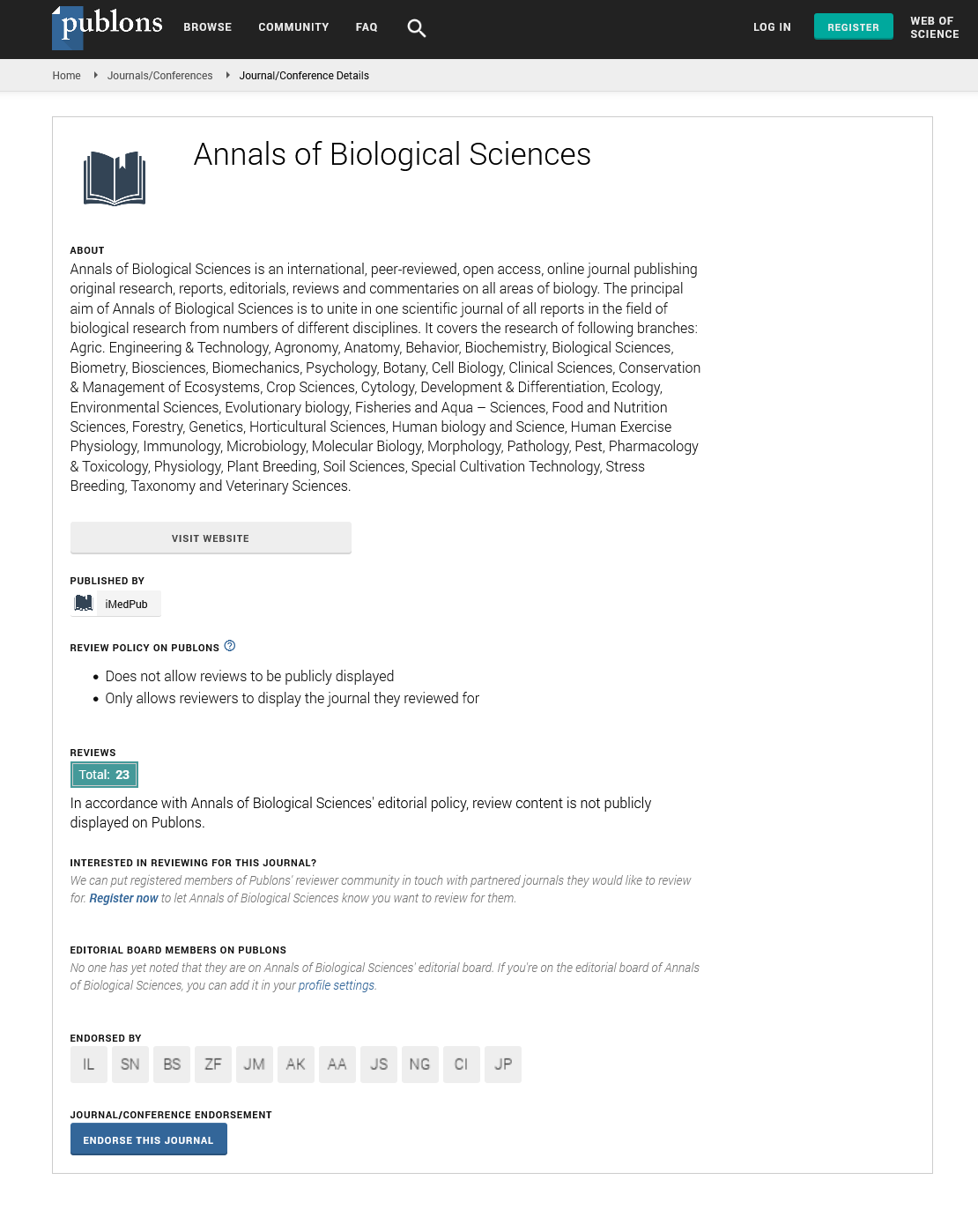ISSN : 2348-1927
Annals of Biological Sciences
New insight into the functional switching of 2-cys peroxiredoxin revealed by high-speed atomic force microscopy
ANNUAL BIOTECHNOLOGY CONGRESS
August 17-18, 2017 | Toronto, Canada
Hiroki Konno, Takamitsu Haruyama, Takayuki Uchihashi, Yutaro Yamada, Noriyuki Kodera and Toshio Ando
Kanazawa University, Japan
ScientificTracks Abstracts: Ann Biol Sci
DOI: 10.21767/2348-1927-C1-002
Abstract
Peroxiredoxin (Prx) is an ubiquitous antioxidant enzyme that reduces reactive oxygen species (ROS) such as hydrogen peroxide, organic peroxide and peroxynitrite. Prxs are classified into typical 2-Cys Prx, atypical 2-Cys Prx and 1-Cys Prx based on the number of cysteine residues and the catalytic mechanisms for their peroxidase activity. The function of 2-Cys peroxiredoxins (2Cys-Prxs) can be converted alternatively from peroxidases to molecular chaperones. This conversion has been reported to occur by the formation of high molecular weight (HMW) complexes upon overoxidation of or ATP/ADP binding to 2-Cys Prxs that appear in electron micrographs as spheres, decameric rings, double-stacked decamers or further stacked filaments. However, the entity responsible for the chaperone function is under debate. We employed the high-speed atomic force microscopy (HS-AFM) to investigate correlation between structure of HMW complex of human PrxII (hPrxII) and its chaperone activity. By the HS-AFM observation, we found that upon binding to phospholipids dimeric human 2-Cys PrxII (hPrxII) is assembled to small oligomers with full chaperone and null peroxidase activities. Spherical HMW complexes are formed, only when phospholipids is bound to overoxidized or ATP/ADP-bound hPrxII. The spherical HMW complexes are lipid vesicles covered with hPrxII oligomers arranged in a hexagonal lattice pattern. Thus, these lipids can be supplied by increased membrane trafficking under oxidative stress, are essential for the structural and functional switch of hPrxII and possibly most 2-Cys Prxs.
Biography
Hiroki Konno has completed his PhD from Tokyo Institute of Technology (Tokyo Tech) in 2002 and Post-doctoral studies from Tokyo Tech. In 2006, he joined chemical resources laboratory, Tokyo Tech, as an Assistant Professor. In the above period, he has studied regulation mechanism of rotary motor, ATP synthase, with biochemical and biophysical methods. Since November 2011, he has been with the Imaging Research Division of Bio-AFM Frontier Research Center, Kanazawa University, where he is currently an Associate Professor. His current research interests include observing protein molecule in dynamic action with HS-AFM.
Google Scholar citation report
Citations : 406
Annals of Biological Sciences received 406 citations as per Google Scholar report
Annals of Biological Sciences peer review process verified at publons
Abstracted/Indexed in
- Google Scholar
- China National Knowledge Infrastructure (CNKI)
- WorldCat
- Publons
- ROAD
- Secret Search Engine Labs
Open Access Journals
- Aquaculture & Veterinary Science
- Chemistry & Chemical Sciences
- Clinical Sciences
- Engineering
- General Science
- Genetics & Molecular Biology
- Health Care & Nursing
- Immunology & Microbiology
- Materials Science
- Mathematics & Physics
- Medical Sciences
- Neurology & Psychiatry
- Oncology & Cancer Science
- Pharmaceutical Sciences
